Sometimes a striking weed will capture our interest, and instead of yanking it out by the roots, we decide to let it grow for the sake of beauty or to see what it becomes. I do this with wild violets, valuing their delicate purple blossoms in spring as well as their medicinal and culinary uses. On the other end of the spectrum is jimsonweed, a tall plant with large, showy blossoms that you might not want to keep around. What is jimsonweed? Let’s take a look at this large weed and what to do if you have it in your yard.
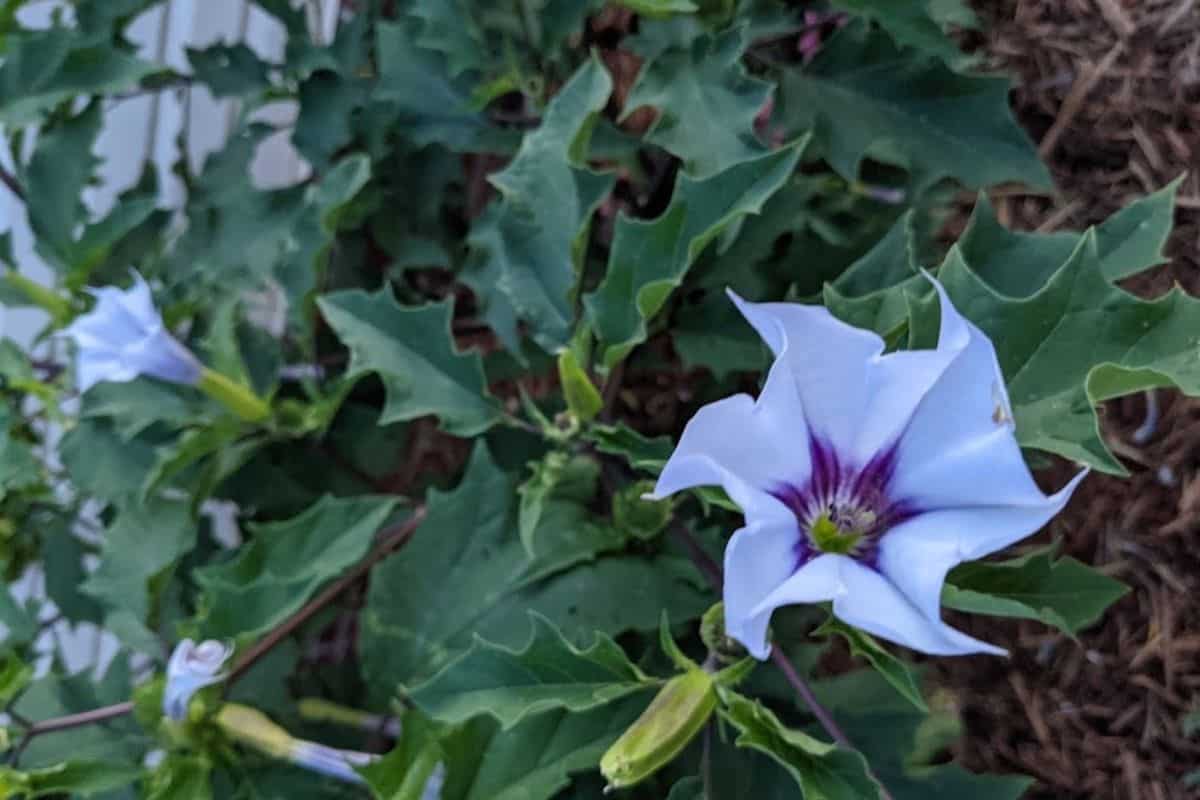
What Is Jimsonweed (Datura stramonium)?
About two to four feet tall, jimsonweed is hard to miss with its distinctive purple stem and large features. It has broad, coarsely toothed leaves resembling those of oaks and produces showy, funnel-shaped blossoms in shades of purple or white.
Jimsonweed is also known by many other names. Here are some of the common names of this plant: Jamison-weed, Jamestown-weed, Jamestown lily, thorn-apple, stink-wort, stinkweed, mad-apple, trumpet plant, loco weed, angel’s trumpet, devil’s fireweed, etc.
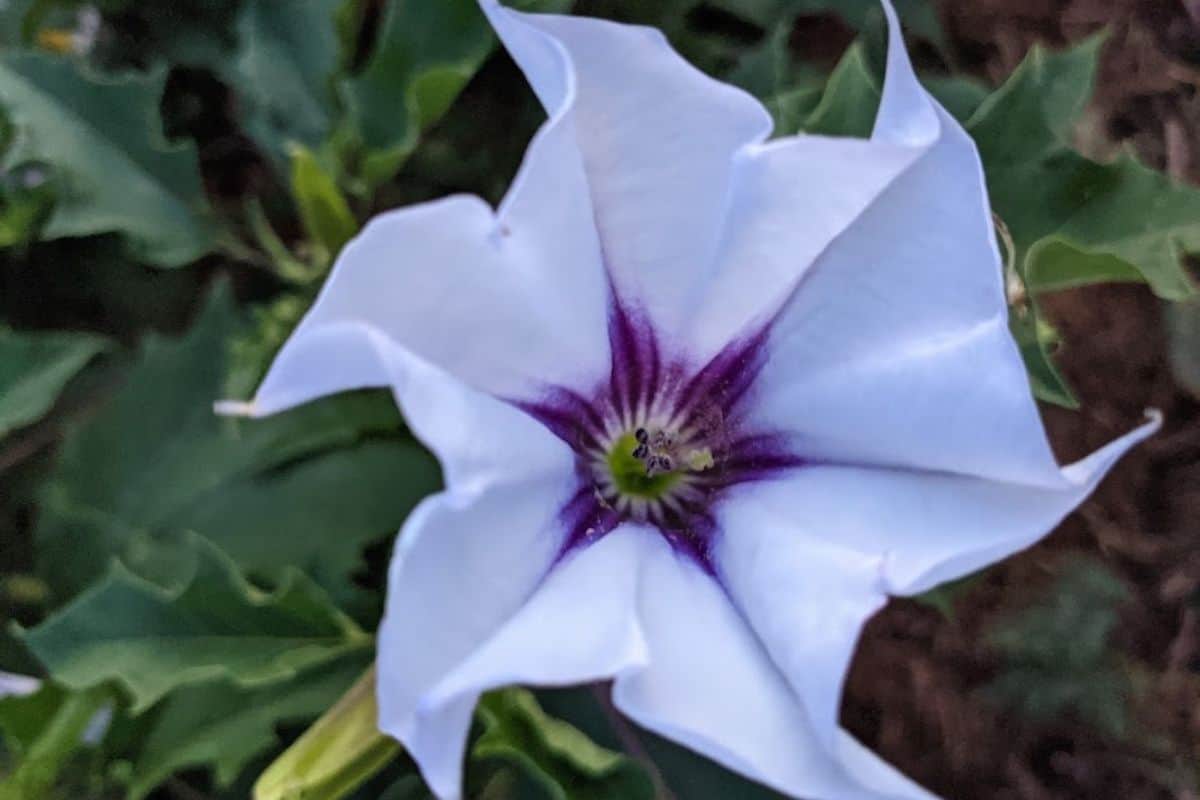
The lovely flowers give way to walnut-sized seed pods (sometimes called thorn apples) covered in sharp spines.
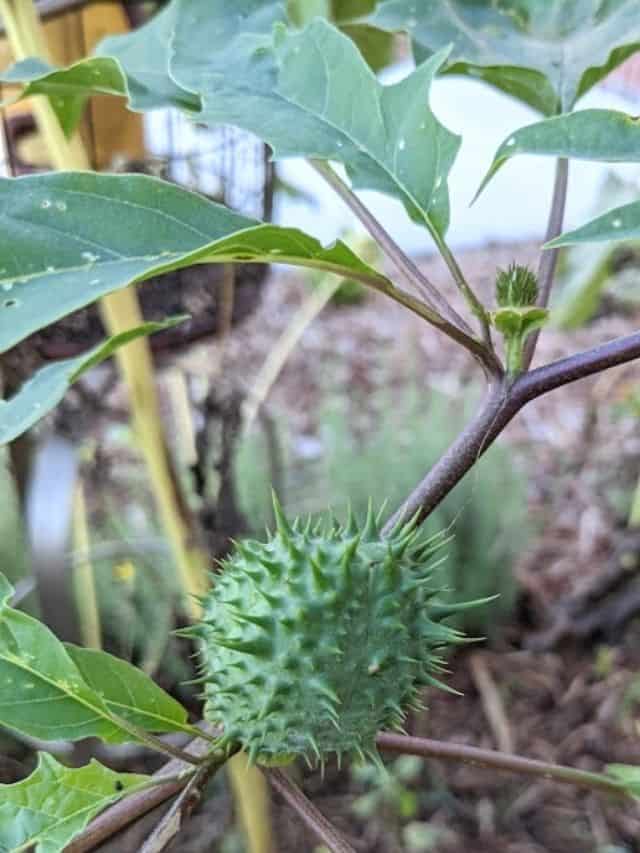
Once the seedpods dry, they open into four chambers, each with many small, black seeds.
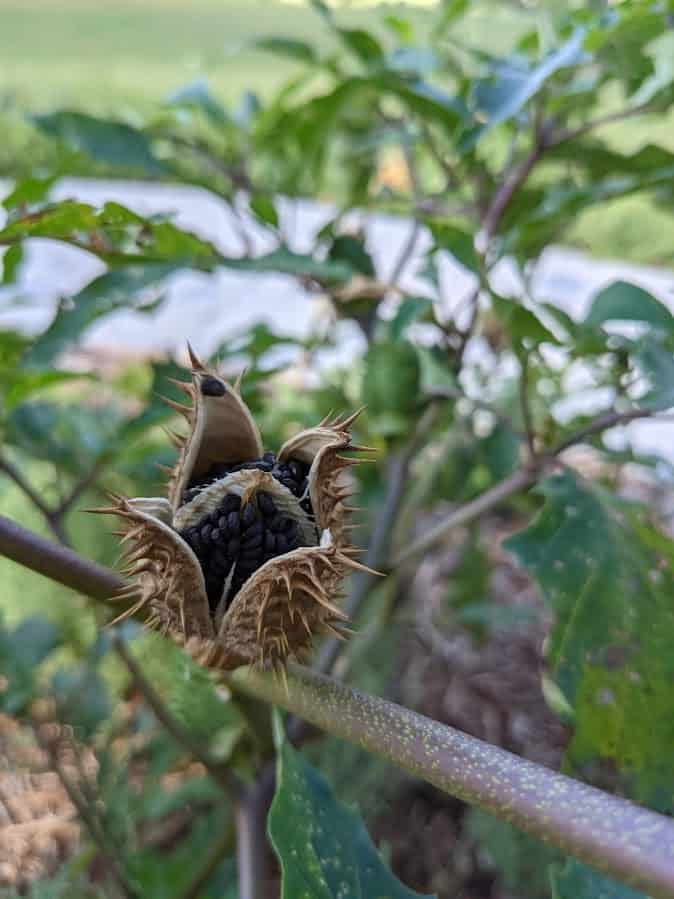
In addition, jimsonweed gives off a strong, unpleasant odor.
This herbaceous annual belongs to the Solanaceae, or nightshade, family. It should come as little surprise, then, that all parts of jimsonweed are poisonous to humans and animals.
Many dangerous plants can show up in your garden. Be prepared by reading Plants That Can Kill: 101 Toxic Species to Make You Think Twice
A nonnative, it was introduced to Jamestown from England and was used to make healing salves for burns. When used to treat soldiers after the Bacon Rebellion in 1676, however, jimsonweed caused some unexpected side effects, including delusions and other abnormal behavior.
Animals usually avoid jimsonweed unless forage is limited, though children captivated by the flowers might try eating them. If not treated immediately, jimsonweed poisoning can lead to death.
What to do if you have it in your yard
Jimsonweed most often grows in cultivated fields, waste lots, and overgrazed pastures, though it thrives in all types of soils and may be found in home gardens as well. Given the danger jimsonweed poses to humans and animals and its nonnative status, it should be removed if found growing in your outdoor space.
Here’s more help on getting rid of unwanted plants in your backyard.
How to get rid of jimsonweed
1. Pull it early
Pull up jimsonweed as soon as you notice it before it has a chance to flower and set seed, if possible. Since jimsonweed is an annual, pulling it before it sets seed will prevent it from spreading and coming back next year. And despite being poisonous if ingested, it is safe to handle and will not cause a rash or other irritation.
2. Mow regularly
If you have a large amount of jimsonweed in a large, open area, such as a field, regular mowing can prevent it from flowering and thus setting seed. This method works similarly to hand pulling, so make sure to cut the plants before they begin blooming to prevent recurrence and spreading.
3. Mulch generously
As with all weeds, a thick layer of mulch will help prevent jimsonweed from growing in the garden. This method is best combined with hand pulling: pull up all the weeds, ideally before they set seed, then spread several inches of mulch around your plants.
Not only does fresh mulch help the garden look attractive and tidy, but it reduces the amount of weeding you have to do throughout the growing season by suppressing weed growth for you. Make sure, though, to keep an eye out for stray jimsonweed (and other weeds!) and pull it up as soon as you see it.
4. Spray sparingly
Although herbicides can effectively control jimsonweed, the above cultural methods — pulling, mowing, and mulching — work so well and are easy enough to implement that herbicides shouldn’t be necessary except perhaps in extreme cases. Keep in mind that herbicides almost always affect non-target species as well as the target weed, not to mention wildlife (especially insects), the soil, and even ground water.
In sum, jimsonweed may have large, showy flowers, but those lovely blossoms decorate a highly poisonous plant. To protect your family as well as pets and livestock, take one or more of the above actions to remove any jimsonweed from your outdoor spaces.
FAQ about Jimsonweed (sometimes spelled Jimson weed)
What part of jimson weed is poisonous?
Every part of the plant is poisonous: from roots to leaves, flowers, and seeds.
Is jimson weed poisonous to touch?
For most people, there’s no danger to touch the plant. BUT, if you’re known to have sensitive skin or have a scrape or cut, you could be affected (and some of the poison could be absorbed through an open cut).
Can goats eat jimson weed?
While goats are great for clearing many unwanted weeds, including poison ivy, they should be kept away from jimsonweed. Ingesting this plant can cause death to your goats.
Is jimsonweed toxic to cats and dogs?
Yes, it’s toxic to all animals and humans. And since cats and dogs are so small, it doesn’t take ingesting much before it’s deadly.
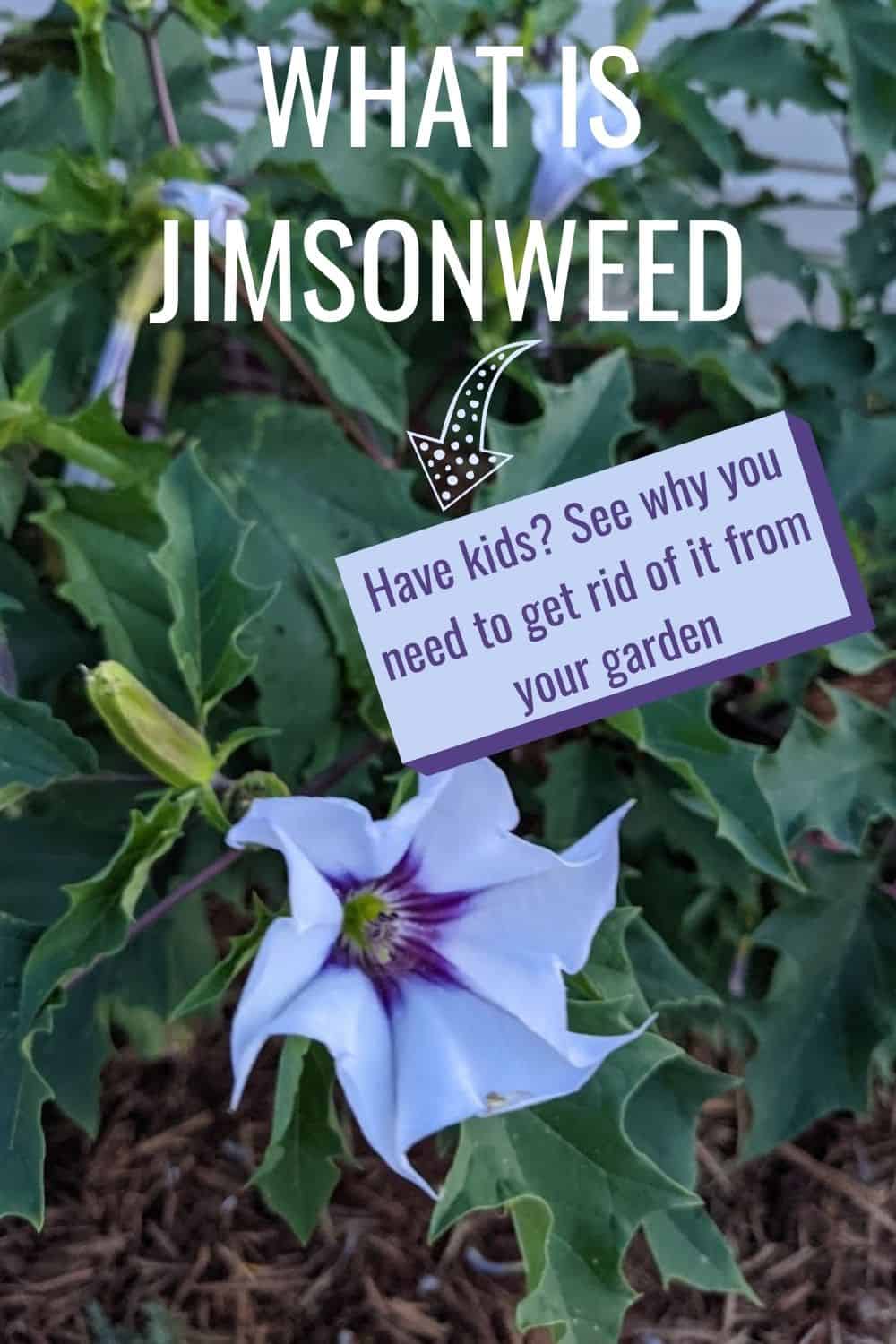

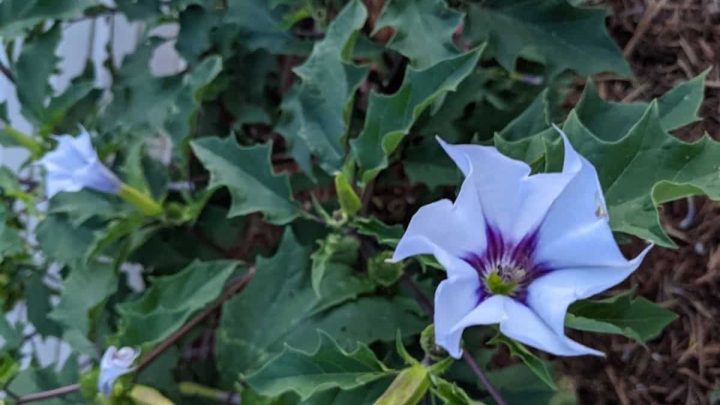

John Peterson
Saturday 24th of August 2024
Found one in a flowerbed. Didn't know what it was, but it looked lethal. I found out what it was , pulled it up , chopped it up. Disposed of it in a black plastic bag.
Pat
Tuesday 9th of May 2023
Excellent information and stunning graphics. Thank you very much. I will recommend this web site to the other gardeners in the family. Thank you.